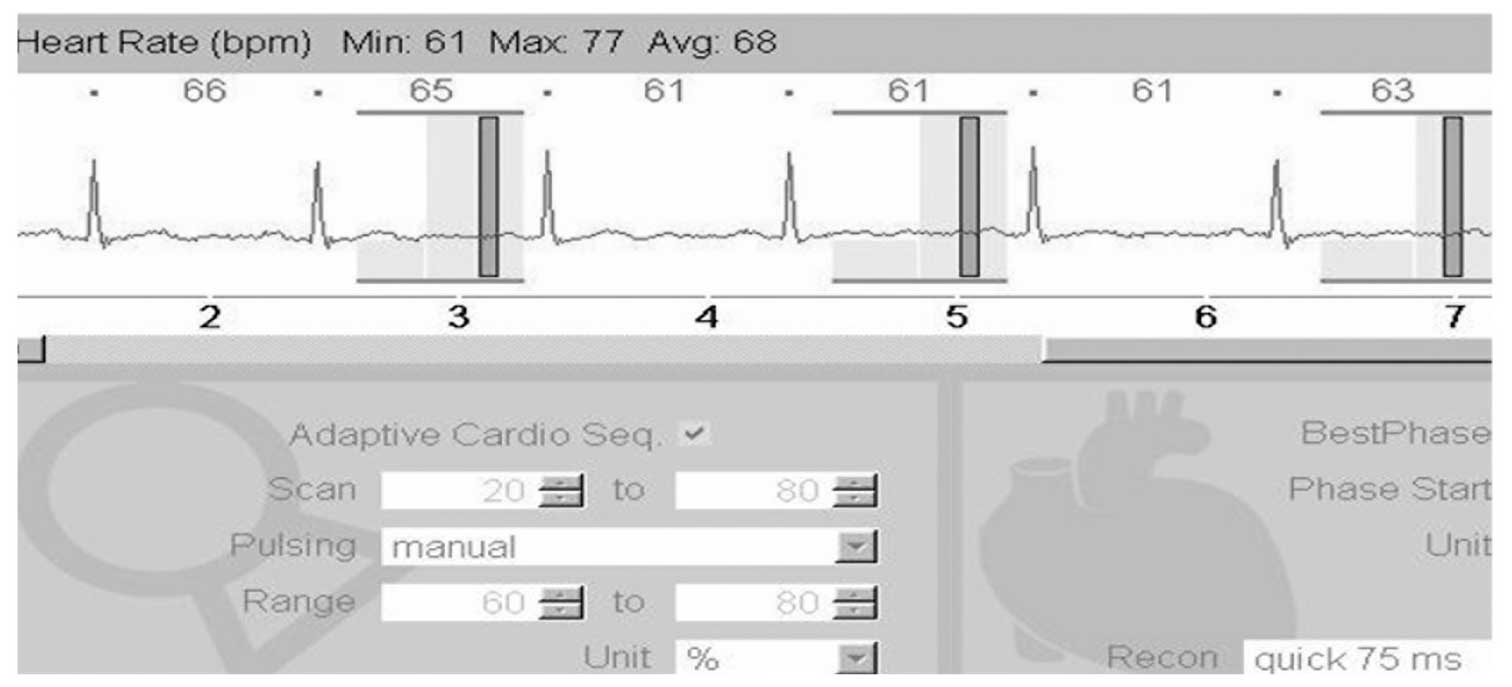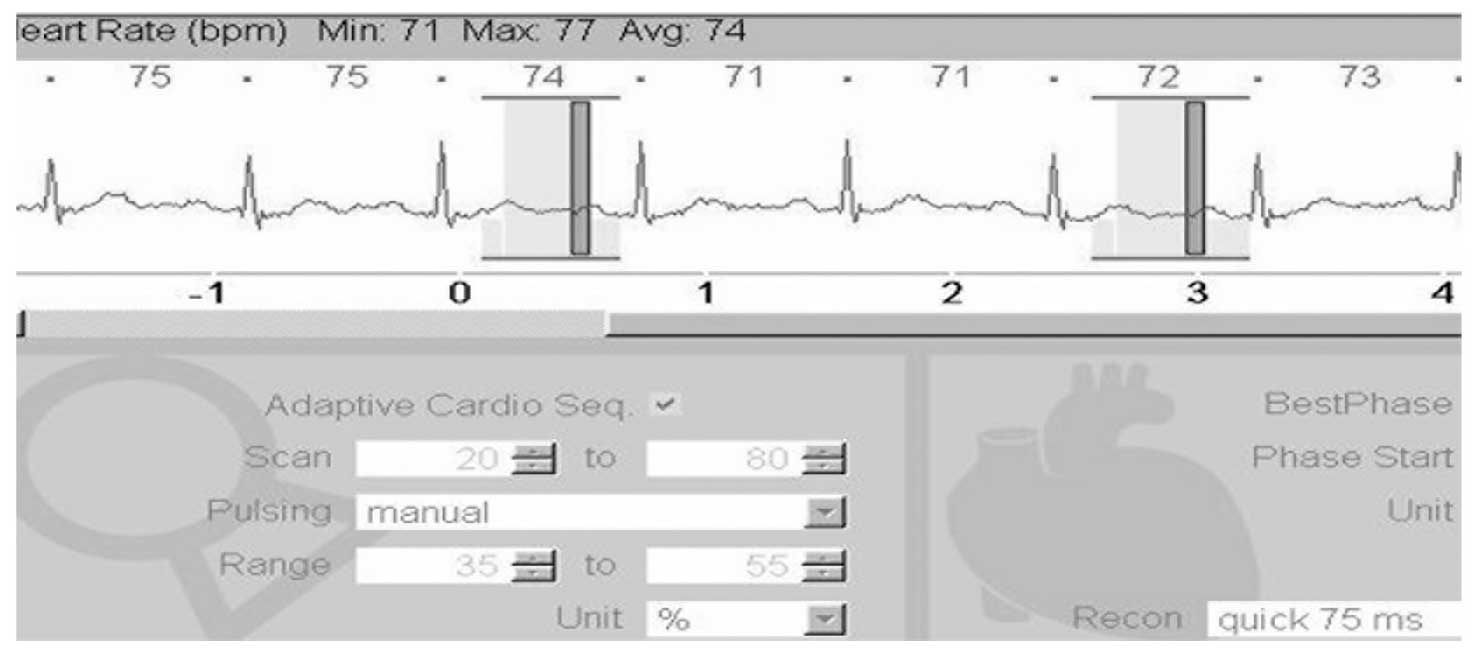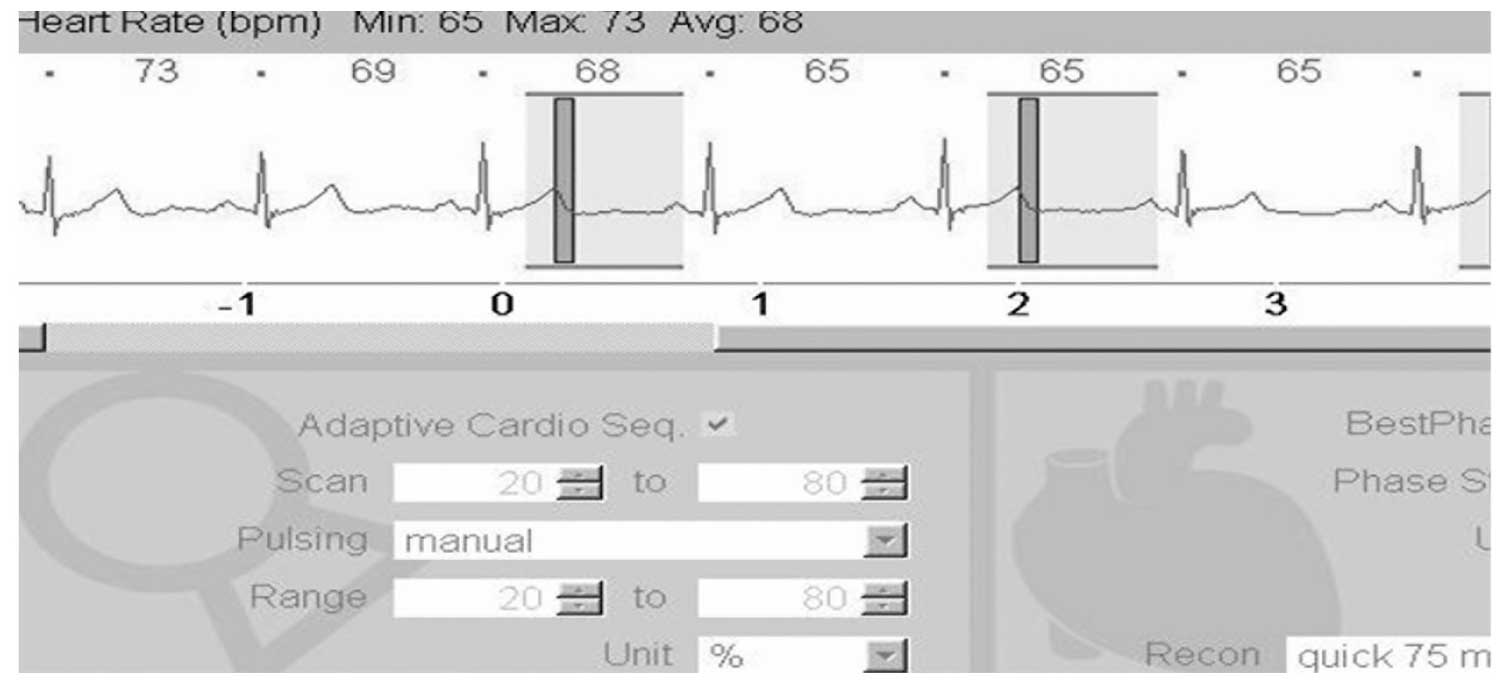|
1
|
Shah DJ, Sachs RK and Wilson DJ:
Radiation-induced cancer: a modern view. Br J Radiol.
85:e1166–e1173. 2012. View Article : Google Scholar : PubMed/NCBI
|
|
2
|
Sodickson A, Baeyens PF, Andriole KP, et
al: Recurrent CT, cumulative radiation exposure, and associated
radiation-induced cancer risks from CT of adults. Radiology.
251:175–184. 2009. View Article : Google Scholar : PubMed/NCBI
|
|
3
|
Husmann L, Valeta I, Gaemperli O, et al:
Feasibility of low-dose coronary CT angiography: first experience
with prospective ECG-gating. Eur Heart J. 29:191–197. 2008.
View Article : Google Scholar : PubMed/NCBI
|
|
4
|
Buechel RR, Husmann L, Herzog BA, et al:
Low-dose computed tomography coronary angiography with prospective
electrocardiogram triggering: feasibility in a large population. J
Am Coll Cardiol. 57:332–336. 2011. View Article : Google Scholar : PubMed/NCBI
|
|
5
|
Achenbach S, Goroll T, Seltmann M, et al:
Detection of coronary artery stenoses by low-dose, prospectively
ECG-triggered, high-pitch spiral coronary CT angiography. JACC
Cardiovasc Imaging. 4:328–337. 2011. View Article : Google Scholar : PubMed/NCBI
|
|
6
|
Abada HT, Larchez C, Daoud B, et al: MDCT
of the coronary arteries: feasibility of low-dose CT with
ECG-pulsed tube current modulation to reduce radiation dose. AJR Am
J Roentgenol. 186:(Suppl 2). S387–S390. 2006. View Article : Google Scholar : PubMed/NCBI
|
|
7
|
Austen WG, Edwards JE, Frye RL, et al: A
reporting system on patients evaluated for coronary artery disease.
Report of the Ad Hoc Committee for Grading of Coronary Artery
Disease, Council on Cardiovascular Surgery, American Heart
Association. Circulation. 51:(4 Suppl). 5–40. 1975. View Article : Google Scholar : PubMed/NCBI
|
|
8
|
Alkadhia H, Stolzmanna P, Scheffel H, et
al: Radiation dose of cardiac dual-source CT: the effect of
tailoring the protocol to patient-specific parameters. Eur J
Radiol. 68:385–391. 2008. View Article : Google Scholar : PubMed/NCBI
|
|
9
|
Nickoloff EL and Alderson PO: Radiation
exposures to patients from CT: reality, public perception, and
policy. AJR Am J Roentgenol. 177:285–287. 2001. View Article : Google Scholar : PubMed/NCBI
|
|
10
|
Budoff MJ, Achenbach S, Blumenthal RS, et
al: American Heart Association Committee on Cardiovascular Imaging
and Intervention; American Heart Association Council on
Cardiovascular Radiology and Intervention; American Heart
Association Committee on Cardiac Imaging, Council on Clinical
Cardiology : Assessment of coronary artery disease by cardiac
computed tomography: A scientific statement from the American Heart
Association Committee on Cardiovascular Imaging and Intervention,
Council on Cardiovascular Radiology and Intervention, and Committee
on Cardiac Imaging, Council on Clinical Cardiology. Circulation.
114:1761–1791. 2006. View Article : Google Scholar : PubMed/NCBI
|
|
11
|
Davis F, Ilyasova D, Rankin K, et al:
Medical diagnostic radiation exposures and risk of gliomas. Radiat
Res. 175:790–796. 2011. View
Article : Google Scholar : PubMed/NCBI
|
|
12
|
Budoff MJ, Achenbach S, Blumenthal RS, et
al: American Heart Association Committee on Cardiovascular Imaging
and Intervention; American Heart Association Council on
Cardiovascular Radiology and Intervention; American Heart
Association Committee on Cardiac Imaging, Council on Clinical
Cardiology: Assessment of coronary artery disease by cardiac
computed tomography: a scientific statement from the American Heart
Association Committee on Cardiovascular Imaging and Intervention,
Council on Cardiovascular Radiology and Intervention, and Committee
on Cardiac Imaging, Council on Clinical Cardiology. Circulation.
114:1761–1791. 2006.
|
|
13
|
Slovis TL: CT and computed radiography:
the pictures are great, but is the radiation dose greater than
required? AJR Am J Roentgenol. 179:39–41. 2002. View Article : Google Scholar : PubMed/NCBI
|
|
14
|
Manowitz A, Sedlar M, Griffon M, et al:
Use of BMI guidelines and individual dose tracking to minimize
radiation exposure from low-dose helical chest CT scanning in a
lung cancer screening program. Acad Radiol. 19:84–88. 2012.
View Article : Google Scholar : PubMed/NCBI
|
|
15
|
Arnoldi E, Johnson TR, Rist C, et al:
Adequate image quality with reduced radiation dose in prospectively
triggered coronary CTA compared with retrospective techniques. Eur
Radiol. 19:2147–2155. 2009. View Article : Google Scholar : PubMed/NCBI
|
|
16
|
Earls JP, Berman EL, Urban BA, et al:
Prospectively gated transverse coronary CT angiography versus
retrospectively gated helical technique: improved image quality and
reduced radiation dose. Radiology. 246:742–753. 2008. View Article : Google Scholar : PubMed/NCBI
|
|
17
|
Scheffel H, Alkadhi H, Plass A, et al:
Accuracy of dual-source CT coronary angiography: First experience
in a high pre-test probability population without heart rate
control. Eur Radiol. 16:2739–2747. 2006. View Article : Google Scholar : PubMed/NCBI
|
|
18
|
Araoz PA, Kirsch J, Primak AN, et al:
Optimal image reconstruction phase at low and high heart rates in
dual-source CT coronary angiography. Int J Cardiovasc Imaging.
25:837–845. 2009. View Article : Google Scholar : PubMed/NCBI
|
|
19
|
Hamon M, Morello R, Riddell JW and Hamon
M: Coronary arteries: diagnostic performance of 16- versus
64-section spiral CT compared with invasive coronary angiography -
meta-analysis. Radiology. 245:720–731. 2007. View Article : Google Scholar : PubMed/NCBI
|
|
20
|
Paul JF, Amato A and Rohnean A: Low-dose
coronary-CT angiography using step and shoot at any heart rate:
comparison of image quality at systole for high heart rate and
diastole for low heart rate with a 128-slice dual-source machine.
Int J Cardiovasc Imaging. 29:651–657. 2013.PubMed/NCBI
|













